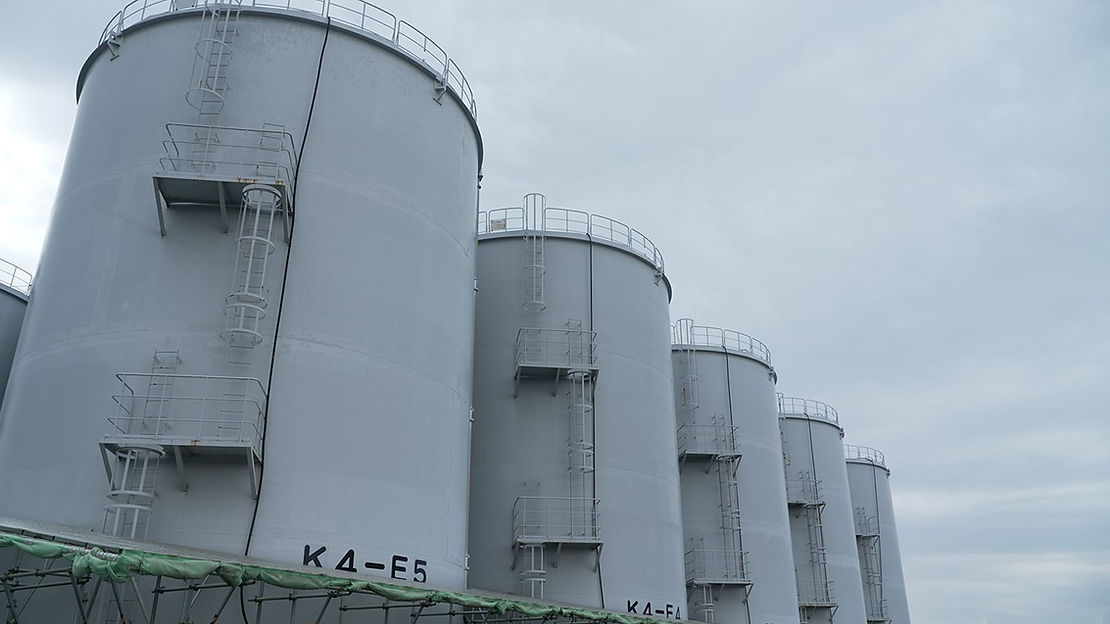By: Pei-Yu Tsai
Japan is planning to release large amounts of treated radioactive wastewater, which originated from the Fukushima nuclear plant, into the Pacific Ocean for next 30 to 40 years. On July 4, an U.N nuclear agency¬— International Atomic Energy Agency (IAEA), gave the controversial plan a green light despite a lot of international opposition.
The contaminated water originally came from the Fukushima nuclear plant disaster. In 2011, the earthquake and tsunami damaged the power plant, causing the power plant’s three reactor cores to overheat and partially melt down. A few days after the disaster, explosions caused by the accumulation of pressurized hydrogen gas took place in the outer containment buildings that enclose reactors 1 and 3, respectively. Since then, in order to cool and stabilize the cores’ debris, the Tokyo Electric Power Company has (TEPCO) pumped large amount of new water into them.
According to the Treated Water Portal Site of TEPCO, as of July, the 1.34 million metric tons of radioactive wastewater have been sitting in over 1,000 storage tanks to be treated for contamination at the Fukushima Daiichi Nuclear Power Station. Now the combination of radioactive wastewater that is yet to be treated and currently being treated has already reached about 98% capacity, enough to fill 500 Olympic-sized swimming pools. TEPCO said they need to be disposed of safety and stabilized instead of building more tanks.
TEPCO plans to use an advanced liquid processing system (ALPS) and other equipment to remove the radioactive substances from the wastewater to levels below national regulatory standards. The treated water then will be diluted with a massive amount of seawater to lower the concentration of tritium, the radioactive material remained in treated water.
In IAEA’s report, after two years of detailed research, Rafael Mariano Grossi, the head of the International Atomic Energy Agency, recently submitted the final safety review to Japan. IAEA approved it, and stated that the plan “will have a negligible radiological impact on people and the environment.”
The plan has drawn plenty of potential concerns from experts and the public, as there is a risk that the treated contaminated water will still impact the ocean environment.
Dr Makhijani, an antinuclear campaigner and president of the Institute for Energy and Environmental Research, said that just “one teaspoon of water with tritium in it would contaminate enough drinking water to supply about 1 million homes over a period of one year.” Local fishing communities also strongly object, claiming that the government’s project will contaminate marine life in the area.
Whether or not the consequences of the plan will affect the ecosystem remains unknown; however, once implemented, it would be impossible to reverse either way.
Source:
https://www.kidsnews.com.au/environment/un-approves-japans-plan-to-put-radioactive-wastewater-into-sea/news-story/47efc57b88a084c717773736ce90e6ec
https://www.theguardian.com/world/2023/jul/04/fukushima-china-calls-for-suspension-of-japanese-plan-to-release-radioactive-water-into-sea
https://www.theguardian.com/environment/2023/jul/07/un-report-on-japans-fukushima-water-plans-fails-to-placate-opponents
https://edition.cnn.com/2023/07/04/asia/japan-fukushima-wastewater-explainer-intl-hnk/index.html
https://www.bbc.com/news/world-asia-66094479











